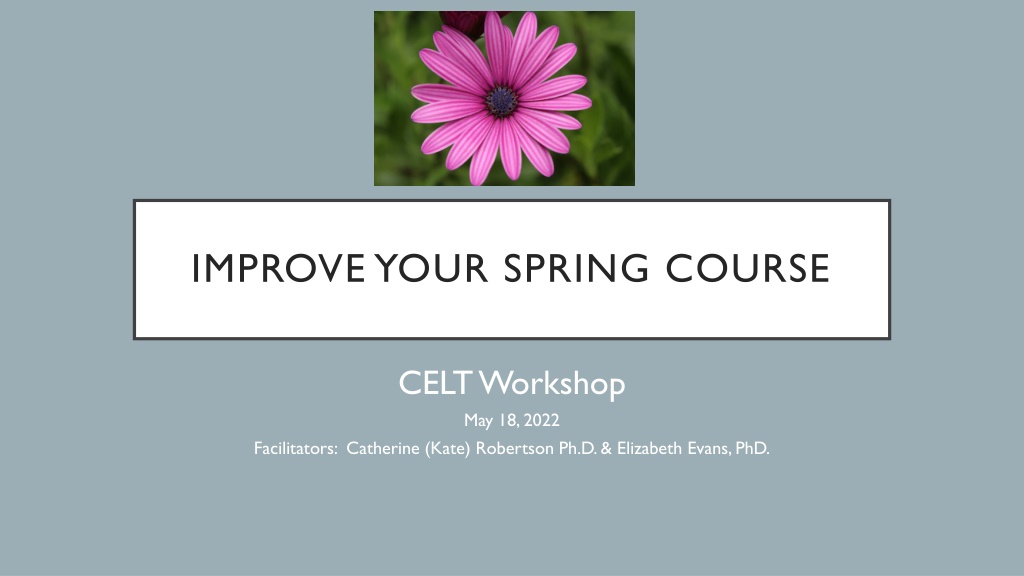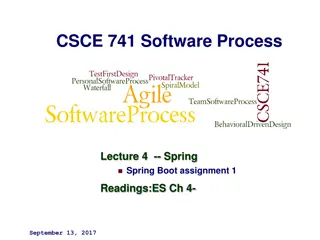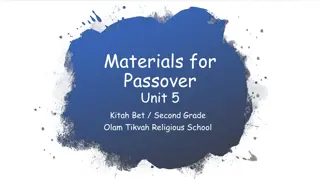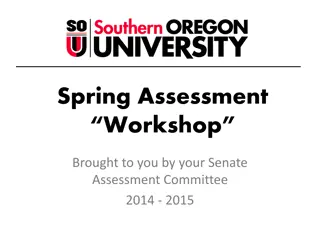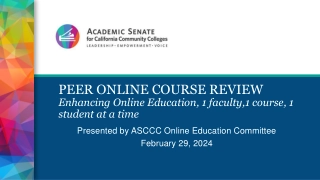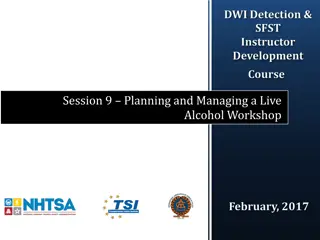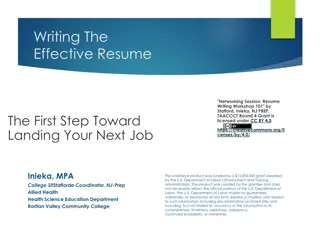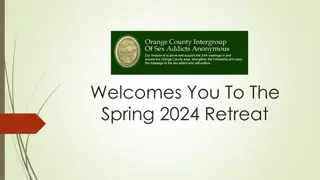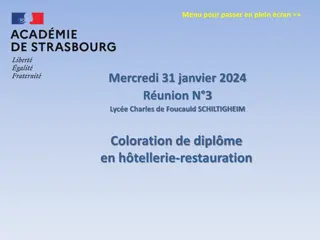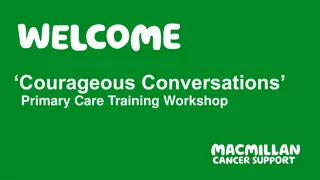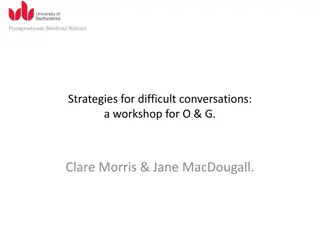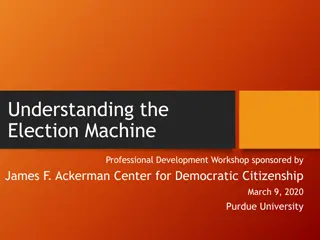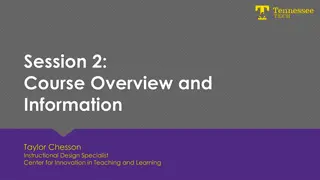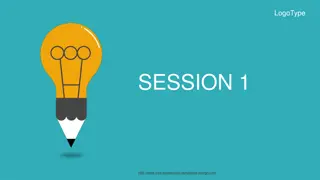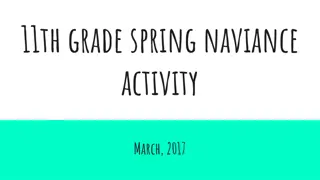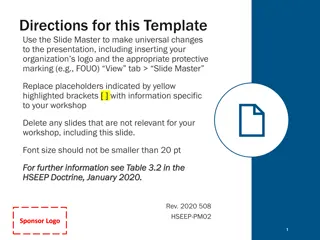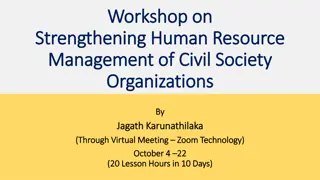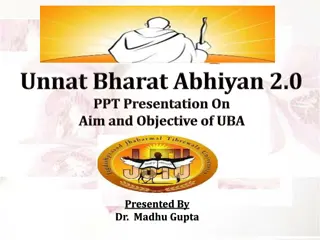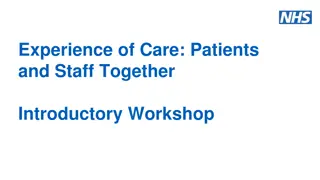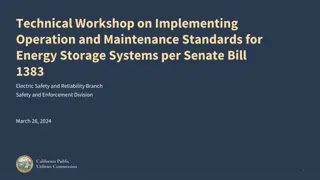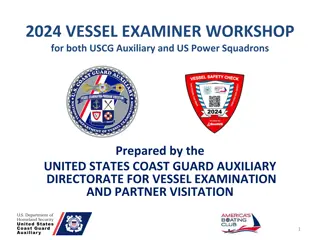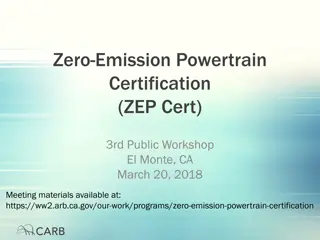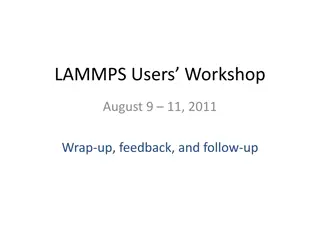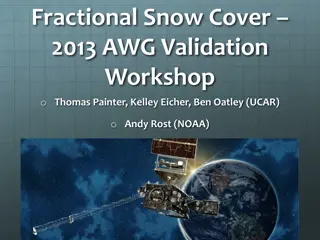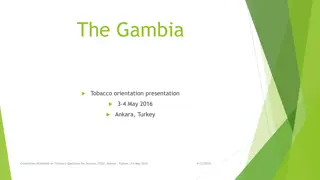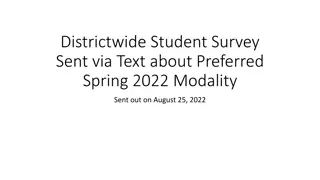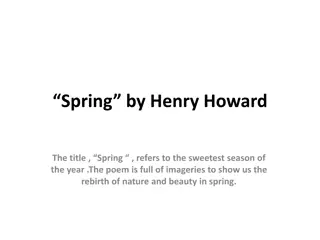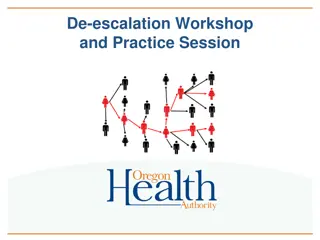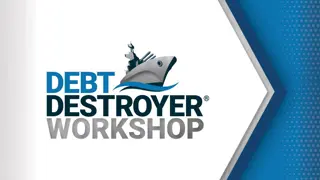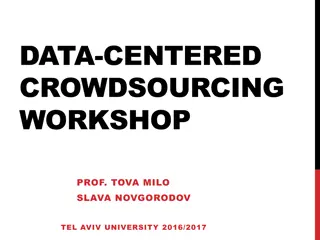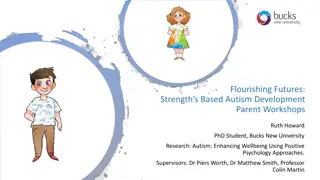Enhancing Your Spring Course: Workshop Insights & Strategies
Explore valuable insights and strategic approaches to improve your spring course in this workshop led by Catherine (Kate) Robertson, Ph.D., and Elizabeth Evans, Ph.D. Delve into identifying areas for enhancement based on previous offerings, refining syllabus content, incorporating active learning techniques, editing assignments, and prioritizing course revisions. Engage in practical exercises to boost student learning outcomes and course effectiveness.
Uploaded on Sep 16, 2024 | 0 Views
Download Presentation

Please find below an Image/Link to download the presentation.
The content on the website is provided AS IS for your information and personal use only. It may not be sold, licensed, or shared on other websites without obtaining consent from the author. Download presentation by click this link. If you encounter any issues during the download, it is possible that the publisher has removed the file from their server.
E N D
Presentation Transcript
IMPROVE YOUR SPRING COURSE CELT Workshop May 18, 2022 Facilitators: Catherine (Kate) Robertson Ph.D. & Elizabeth Evans, PhD.
OPENING WITH PRAYER Spring Semester is past While we need a rest, Lord, not just yet! Help us with our work to support students and their learning!
SESSION OUTLINE AND OBJECTIVES 1. Leader and Participant Introductions and background on chosen course 1. Based on results of spring offering, identify and describe areas for improvement in a particular course 2. Look at outputs and inputs 2. Use analysis questions and samples to practice syllabus revisions 3. Analysis questions to consider 3. Determine appropriate active learning strategies to add into a syllabus 4. Practice editing strategies on assignments and objectives 5. Where is active learning? 4. Develop and prioritize plans for revising the course and syllabus 6. Plan revision
INTRODUCTIONS Name Department Course you are working with today and why
WHAT DOES YOUR COURSE NEED? THIS NOT THIS This Photo by Unknown Author is licensed under CC BY-SA This Photo by Unknown Author is licensed under CC BY This Photo by Unknown Author is licensed under CC BY-SA
INPUTS AND OUTPUTS Assignments, directions, objectives, results
INPUTS AND OUTPUTS INPUTS DIRECTIONS, OBJECTIVES, ETC. OUTPUTS STUDENT RESULTS, STUDENT QUESTIONS, ETC. Inputs Choose an assignment from your syllabus. Consider: Output what were the results of the assignment? Assignment itself Student grades Directions Student questions any confusion? Objectives How do you link inputs and outputs? Focus today = review assignment and go backward
ANALYSIS QUESTIONS How did students perform on this assessment/assignment? How did you support student study strategies? How did you communicate & explain what you wanted them to do in this assignment? How did you write your learning outcomes/objectives? How did you link your learning outcomes/objectives to guide students to their learning?
PRACTICE TOGETHER Sample Assignment Directions: Choose one of the case studies from either Chapter 3 or 4, and write a reaction. Responses should be thorough. What does this make you think about? What would you include in new, updated directions?
THINK AND WORK Take 10 minutes on your own, review at least one assignment in your syllabus, the directions for that assignment and think about the analysis questions from slide 8.
SHARE What did you discover during your individual worktime?
PAIR BREAKOUT Each person will have 7 minutes; Share one particular assignment instructions. One person from each pair plays a student (wears the student hat): Student reads the instructions and gives feedback about their understanding to the author, then switch. Author reflects on: How do directions look through my student s eyes? What am I supposed to know and be able to do? ~
SHARE/DEBRIEF What did your partner notice that you missed? How did a second set of eyes and ears contribute to your understanding of a student s point of view? What other questions/edits has this exercise raised?
LEARNING OBJECTIVES SHOULD BE Measurable Written with an assessible verb Linked to specific content delivery, materials and student work Matching the Bloom s level of measurements made through assignments and assessments
PRACTICE TOGETHER Sample Objective/Content/Activity/Assessment Alignment: What suggestions to you have for edits? Objective Content Activities Assessment Students will understand the factors that led up to the American Civil War. Read Chapter 16 in the text Lecture on Chapter 16 in class Draw a map of the Union and Confederate states and colonies.
WHERE DO YOUR STUDENTS FALL? WHERE WOULD YOU LIKE THEM TO BE? Active Passive
HOW CAN WE GET THEM THERE? Active Learning Strategies Resources: Interactive Strategies Bloom s with Questions Stems and Sample assessments
THINK AND WORK Take 10 minutes on your own, review Bloom s handout and interactive strategies handout and determine what might be a good match for adding to your class
PAIR BREAKOUT Choose objective(s) you d like to edit maybe the one(s) linked to the assignment you worked on earlier? Determine how you will match to content and activities What active learning strategies can you incorporate? ~ Come back and share
Summary: Pathway to a refined Syllabus and Course Objectives Assignments Activities Content
WRAP UP/QUESTIONS Thank you for attending today!
